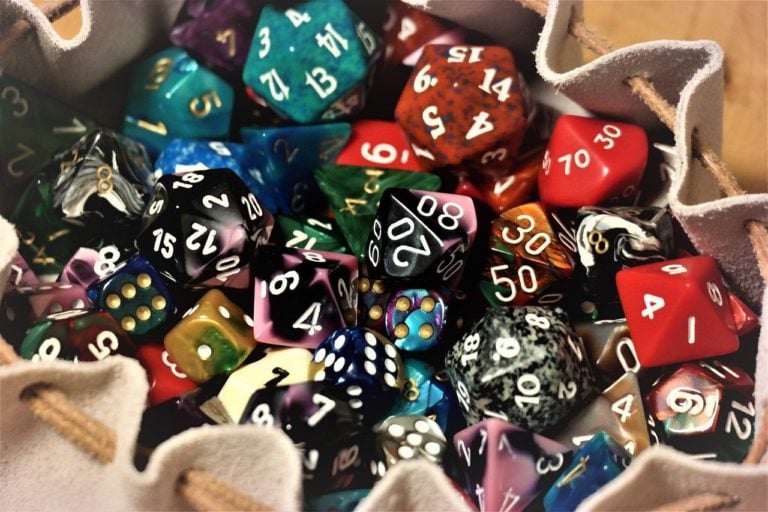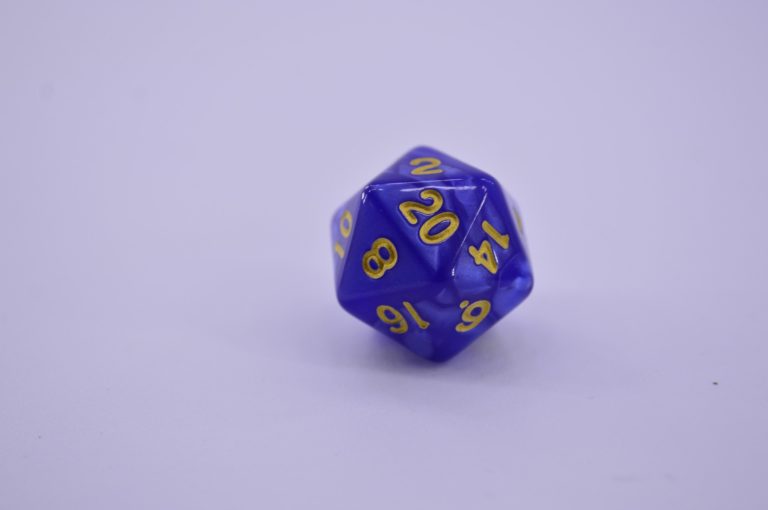Hollow One 5E Guide | Hollow Ones Wildemount Traits
You know what 5E needed? A playable undead race. The living dead are paramount to most Dungeons & Dragons games, so adding them with the Explorer’s Guide to Wildemount was a fantastic choice. These undead creatures not only serve as a way to bring undead into the campaign, but bring back dead characters in the form of Hollow Ones. Thanks, Blightshore! Finally, that cursed land makes something useful. Learn more with our Hollow One 5E Guide.

Table of Contents
Hollow One 5E Guide
As someone who played a lot of older editions, the lack of any flavor of Undead was a little disheartening. Where were my barely-alive boys? With the Hollow Ones, not only do we get a splash of that undead flavor, but we also get the chance to bring back favorite characters that we weren’t quite done with.
Lore
The Hollow ones are beings that were reanimated from the horrendous curses of the Blightshore. Their bodies are souless, departed for the afterlife… And yet, their bodies have a small fragment of themselves, clinging for life.
That creates a Hollow One, beings that are seen as normal on the Blightshore, but elsewhere might fall into trouble. They appear undead, magic recognizes them as undead, and their posture is like that of one already dead. Their past weighs on them like a heavy, tattered cloth… Or a sword through the gut. Few of these beings become adventurers, questing for vengeance, longing for somewhere else, or a reason to live.
Well… That was cheerful! Let’s move on.
Hollow One Traits
The Hollow Ones are less of a race and more of a supernatural gift. They are granted to characters who used to be alive, and thus characters reanimated as Hollow Ones keep all of the stats of their old race (including new subraces like the Pallid Elf!), and get some traits as well.
Cling to Life. When you make a death saving throw and roll 16 or higher, you regain 1 hit point.
Revenance. You retain your creature type, yet you register as undead to spells and other effects that detect the presence of the undead creature type.
Unsettling Presence. As an action, you can unsettle a creature you can see within 15 feet of you. The target has disadvantage on the next saving throw it makes within the next minute. Constructs, undead, and creatures that can’t be frightened are immune to this feature. Once you use this feature, you can’t use it again until you finish a long rest.
Returned from Old Life
Because you are still of the creature race you once were, you retain all ability score upgrades and traits that your race used to have. That shred of yourself within means that you do not gain the immunities of an Undead creature. Instead, you gain a few miscellaneous things.
Ageless
As expected when your body is dead, you never age. This is a rather niche buff, but it gives a little bit of immunity to some curses and effects. Since 5E doesn’t have any aging penalties or bonuses, this doesn’t do much. But it does prevent you from aging to the point where you “naturally” die, so… That’s a plus!
Cling to Life
One of the more impactful effects is that you have a 25% chance to regain 1 hitpoint while making a death saving throw. Rolling a 16 or more is still not an amazing chance to instantly stand, but it’s helpful to have even a mere chance of staving off dying… Again. This isn’t something you want to abuse, since you already got a second chance at life. But if you get knocked out during a fight, then… Let’s just say this comes in handy.
Revenance
You’re both yourself, and not yourself! This is the only real negative effect that the “gift” gives to you. You’re still your creature type, but you show up as undead if anybody tries to check you with Detect Undead or something like that. This can get you, and your party, into trouble if Undead are not appreciated in that area. This doesn’t mean that you take the effects of being undead; spells that only affect undead don’t work on you. This is only for detection. You’ll have a lot of explaining to do, and you might not be considered trustworthy. But at least Clerics won’t be able to use Turn Undead on you.
Unsettling Presence
As an action, you can force a creature to have disadvantage on saving throws for a minute. It’s a Frighten effect, so it only works on living creatures. But, giving a target disadvantage on saving throws is actually really good. This makes a caster build for a Hollow One really potent, since you can almost guarantee that your spells will succeed on a target. Or, you can synergize with your party to let your allies be more effective. Use this action on powerful bosses that really deserve it.
Why Play a Hollow One?
While a GM can say that this race can exist outside of Matt Mercer’s Blightshore, the question becomes what makes this gift strong. First of all, I hope it’s obvious that any race would appreciate Ageless, Cling to Life, and Unsettling Presence. All three of those are strict upsides; Revenance is rather minor in comparison; Especially on the Brightshore, since Hollow Ones are treated as regular people there. This is a potent supernatural gift, so ask your GM if it’s allowed.
Do remember that this does have a slight roleplay hinderance; you’ve died before, and you’ve got sadness in your heart. This doesn’t have to make your a one-note depressed person, but it does become a rather significant part of your character.
What Build Paths Work Best?
Unsettling Presence is the only really substantial ability that may push you into a Crowd Control role. Using Unsettling Presence and then hammering the enemy with Hold Monster or Dominate Monster could easily win you a fight. Even if they’re immune to enchantment, disadvantage on saving throws is almost a deathwish in most 5E parties. Try to make saving throws the core of your build, either with a casting class or a martial class that makes good use of saves.
In terms of flavor, you might want to consider the Revived Rogue, if your GM lets you playtest UA content. You did literally just come back to life, after all.
What is a Supernatural Gift?
If you have read through more recent offerings from Wizards of the Coast, you might be surprised that the Hollow One was created as a supernatural gift instead of a Lineage. While a lineage – like the kind used in Van Richten’s – would be ideal for this, they were not widely used at the time Wildemount was released.
Instead, WOTC opted to use supernatural gifts. These mechanics have shown up previously, but they were heavily used Mythic Odysseys of Theros. They are an interesting way to modify a character without creating a new race or subrace, and they allow for the use of a hollow one with any other playable race as a baseline. If you wanted to use this a lineage instead, you can use the same ability score improvement rules from Van Richten’s and give your character +2 to one ability and +1 to another.
Wrapping up the Hollow One 5E Guide
As undead races go, this supernatural gift is really cool. You get a bunch of benefits of being undead, without punishing your party by forcing them to slowly heal you. Because it’s appended to a race, you can make a Hollow One out of literally anything and have it work well; using Unsettling Presence will be useful on almost every party, whether or not you yourself can cast.
However, you would have to talk with your GM about having Hollow Ones be available immediately. This takes all good parts about your race and adds a few positive boons. And your party might have some questions if an undead is talking to them at a bar with no warning.
That wraps up our Hollow One 5E Guide. For another look at the new races and subraces, see our Wildemount Races Review.






